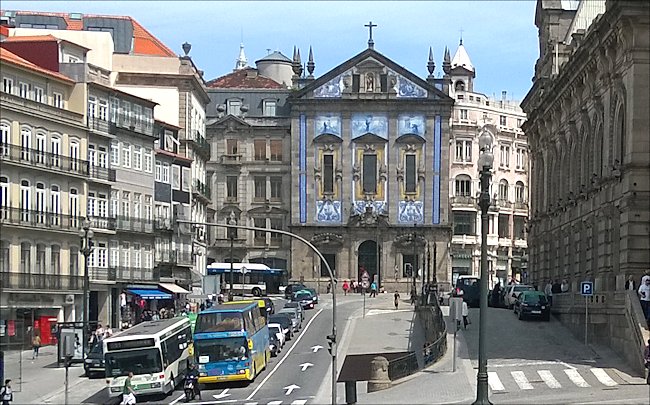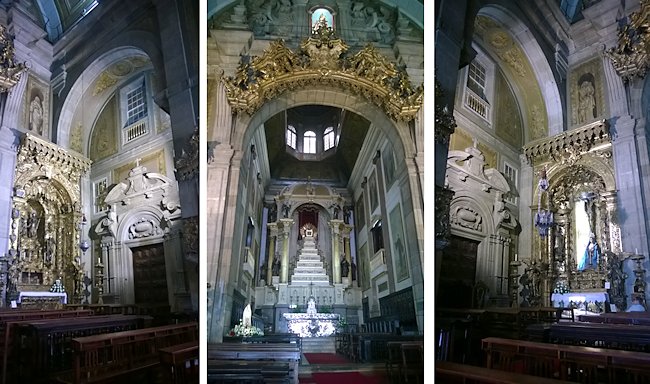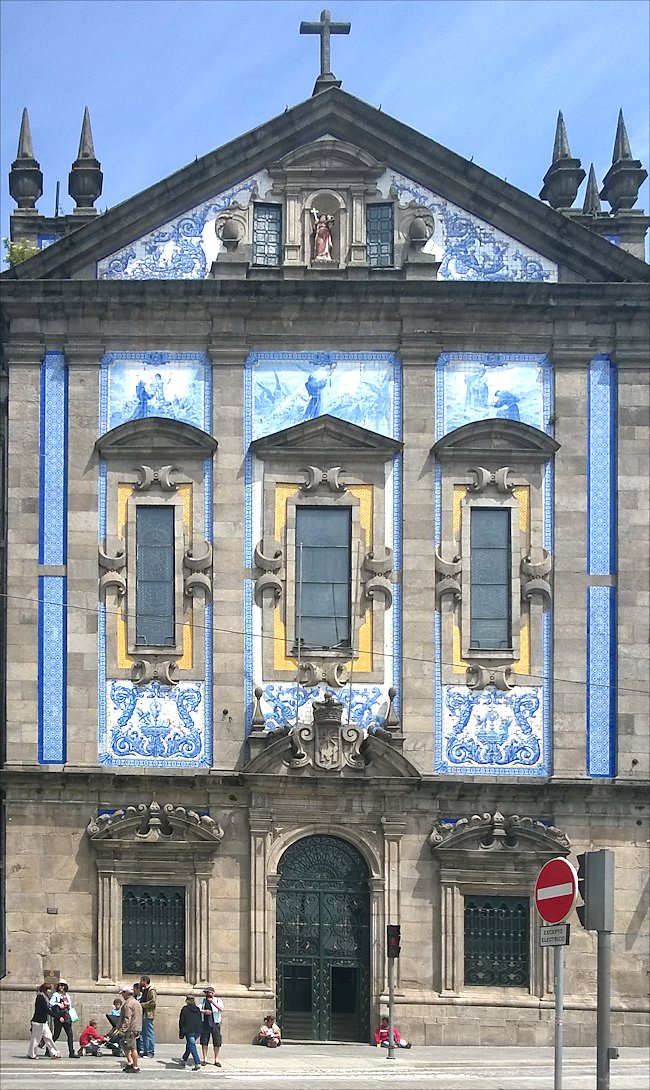Igreja de Santo Antonio dos Congregados
In English this means the Church of St Anthony's Congregation. It is attractively decorated with blue and white tiles and can be found just north of the main Porto Sao Bento Railway Station. It is more like a chapel than a traditional church.

The Church of St Anthony's Congregation
In 1657 the land was purchased to build a chapel in the name of St Anthony. The building was completed in 1680. In 1683 Prince Pedro granted royal protection for the church and also an annual grant for its upkeep. In 1694 decision was made to build an even larger church and construction started in the same year. Building work was finished in 1703. During the siege of Porto between 1832 to 1835 the church was used as a hospital and also to store military equipment. The facade, although sober compared with other Porto churches, reveals some baroque influences with intricate stonework around the main windows and on the roof section.
St Anthony was born in Lisbon at the end of the 12th century in a house near Lisbon cathedral. He was baptised with the name of Fernando Martins de Bulhoes. He became a Portuguese Catholic priest and friar of the Franciscan order and became famous for his knowledge of the Bible and forceful preaching. He is the patron saint the finding things or people that are lost.
Around 1210, he joined, as a novice monk, the religious monastic order of the Canons Regular at the Augustinian Abbey of Saint Vincent on the outskirts of Lisbon. He came from a wealthy and noble family who often came to visit him at the Abbey. He was very conscientious about studies and found these visits a distraction. He requested to be moved to the monastery of Santa Cruz de Coimbra, which was an important mediaeval and ecclesiastical cultural centre at that time where he studied Latin, Canon law, philosophy and theology.

Inside view of the Church of St Anthony's Congregation
After his ordination to the priesthood, Fernando was given the position of Guestmaster and placed in charge of hospitality for the abbey. While he was in Coimbra, some Franciscan friars arrived and settled at a small hermitage outside Coimbra dedicated to Saint Anthony of Egypt. Fernando was strongly attracted to the simple, evangelical lifestyle of the friars, whose order had been founded only eleven years prior.
News arrived that five Franciscans had been beheaded in Morocco, the first of their order to be killed. King Alfonso ransomed their bodies to be returned and buried as martyrs in the Abbey of Santa Cruz. Inspired by their example, Fernando obtained permission from church authorities to leave the Canons Regular to join the new Franciscan Order. Upon his admission to the life of the friars, he joined the small hermitage in Olivais, adopting the name Anthony.
He went to Morocco as a missionary but fell seriously ill and decided to sail back to Portugal in order to get healthy again so he could carry out his duties. The ship encountered a storm and was blown off course. It landed in Sicily. He eventually made his way to Tuscany where he was assigned to a convent of the same order. He was still feeling ill and looked very sickly. He was finally assigned to a country hermitage in San Paolo where he spent most of his time in his cell in a nearby cave in private prayer and study.

Outside view of the Church of St Anthony's Congregation
During the occasion of an ordination in 1222 Fernando was called upon to give a sermon to his fellow Franciscan monks and visiting Dominican Friars. It created a deep impression on everyone present. His skill was recognised and he went on to became a renowned preacher and teacher of Scripture. He soon came to the attention of the founder of the Franciscan order Francis of Assisi and Pope Gregory IX. He died young age 35. He was canonised quickly by the Pope because of his special preaching and teaching ability and dedication to the church.
Travel books

